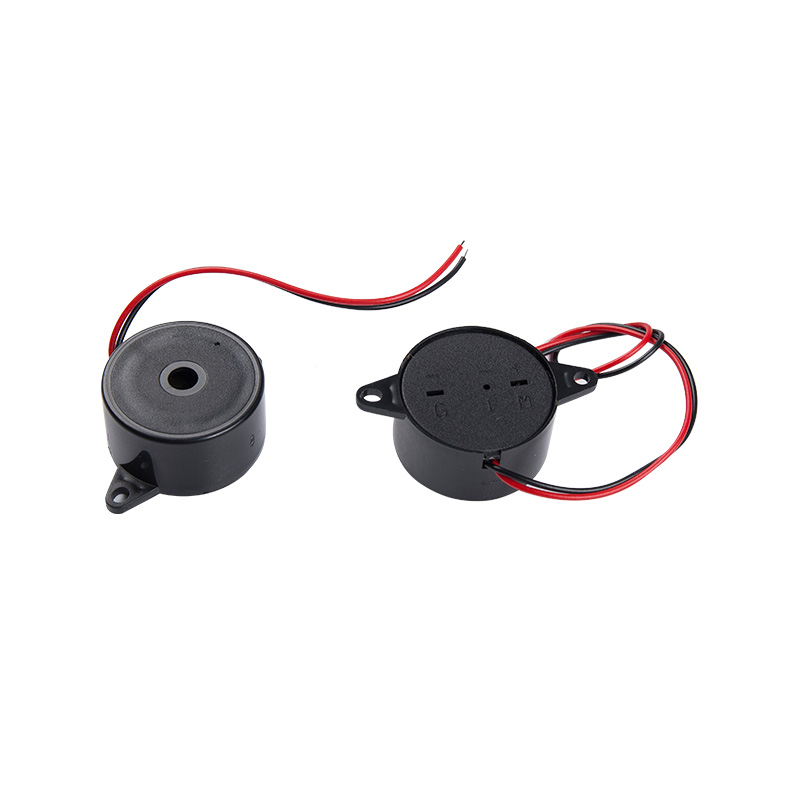Optimizing the sound quality of a piezo buzzer in high-fidelity audio applications requires careful attention to several key design factors.
1. Resonance Frequency
The resonance frequency of a piezo buzzer is critical for sound quality. In high-fidelity audio applications, you want to fine-tune the resonance frequency to match the desired pitch and ensure clear, accurate sound. A mismatch in resonance frequency could result in distortion or a "muddled" sound. This can be adjusted through changes in the material properties of the piezo element or by modifying the physical dimensions of the buzzer.
2. Material Selection
The material used for the piezoelectric element can significantly influence the sound quality. Higher-quality piezoelectric ceramics or polymers will provide better sensitivity, which allows for a more precise sound output. Common materials include:
Lead zirconate titanate (PZT) for better sensitivity and sound response.
Polymer-based piezo materials for more flexible sound characteristics but lower efficiency.
Using high-grade materials ensures the buzzer can produce the required frequencies with clarity and minimal distortion.
3. Shape and Size of the Buzzer
The physical shape and size of the piezo buzzer directly impact its sound output. A larger piezo element typically produces a louder and fuller sound, but it may have a lower resonance frequency. Smaller buzzers may be better for higher frequencies but might compromise sound pressure output. In high-fidelity audio, balancing size and shape to produce a wide frequency range is important.
4. Electrode Configuration and Placement
The design of the electrodes that drive the piezoelectric material affects the efficiency and uniformity of sound generation. Proper electrode placement and design ensure that the piezo element is excited evenly and efficiently, leading to a clearer sound output. For high-fidelity applications, ensuring the piezo element is driven in the most efficient way can significantly reduce distortion and improve tonal accuracy.
5. Sound Pressure Level (SPL) Control
The sound pressure level (SPL) needs to be carefully managed to avoid distortion at high volumes. Piezo buzzers generally have lower SPLs than electromagnetic transducers, which could be a limitation in audio applications requiring high sound levels. Amplifying the output signal without introducing distortion requires careful attention to circuit design, particularly in filtering and driving the buzzer within its optimal operating range.
6. Frequency Response Range
Piezo buzzers typically operate well within a limited frequency range. To optimize the sound for high-fidelity applications, it’s essential to choose a buzzer with an appropriate frequency response for the desired audio. Depending on the application, you may need to use a buzzer with a broader frequency response or incorporate additional components (like passive filters or equalizers) to ensure the output matches the desired sound quality.

7. Damping and Control of Vibration
In high-fidelity audio applications, unwanted vibrations or ringing can cause distortion and affect sound clarity. To minimize this, damping materials or structures are often added around the piezo element. This helps control unwanted resonances and ensures the buzzer produces a clean, crisp sound. Some buzzers come with built-in damping systems, but in more advanced designs, external damping may be required.
8. Power Supply Quality
The quality of the power supplied to the piezo buzzer is crucial for maintaining stable sound output. Fluctuations or noise in the power supply can lead to unwanted distortion or inconsistent sound. For high-fidelity applications, a regulated and clean power source is essential to ensure that the buzzer’s performance remains consistent and reliable.
9. Temperature Stability
The performance of piezo buzzers can be affected by temperature changes, leading to shifts in their resonance frequency and overall sound output. In high-fidelity audio applications, it’s important to ensure that the buzzer’s design is stable across the expected temperature range. This may involve using temperature-compensating materials or designing for operational consistency across a wide temperature range.
10. Enclosure and Acoustic Design
The enclosure that houses the piezo buzzer plays a significant role in how sound propagates. An acoustically optimized enclosure can help amplify or refine the sound produced by the piezo element. The design of the housing—whether it's open or sealed, the materials used, and the volume of the enclosure—can impact the frequency response and clarity of the sound. In some cases, additional resonators or sound guides may be included to enhance the tonal quality.
11. Feedback Mechanism for Fine Tuning
For high-fidelity applications, integrating a feedback mechanism that continuously measures sound output can help fine-tune the buzzer's performance. This feedback loop can automatically adjust the driving signal or other parameters to optimize sound quality and compensate for any environmental changes, ensuring consistent audio performance.


 EN
EN  English
English Deutsch
Deutsch 中文简体
中文简体
